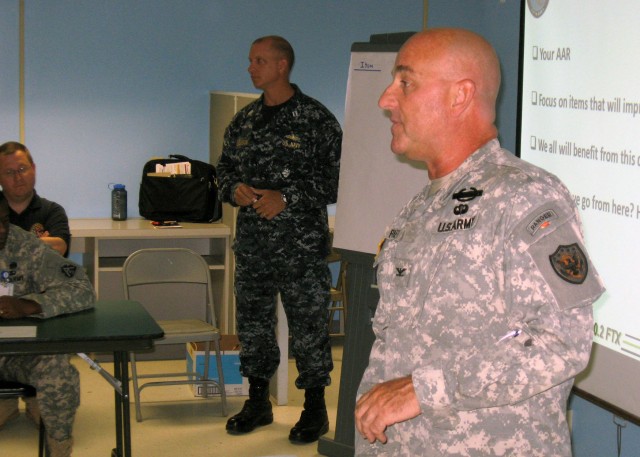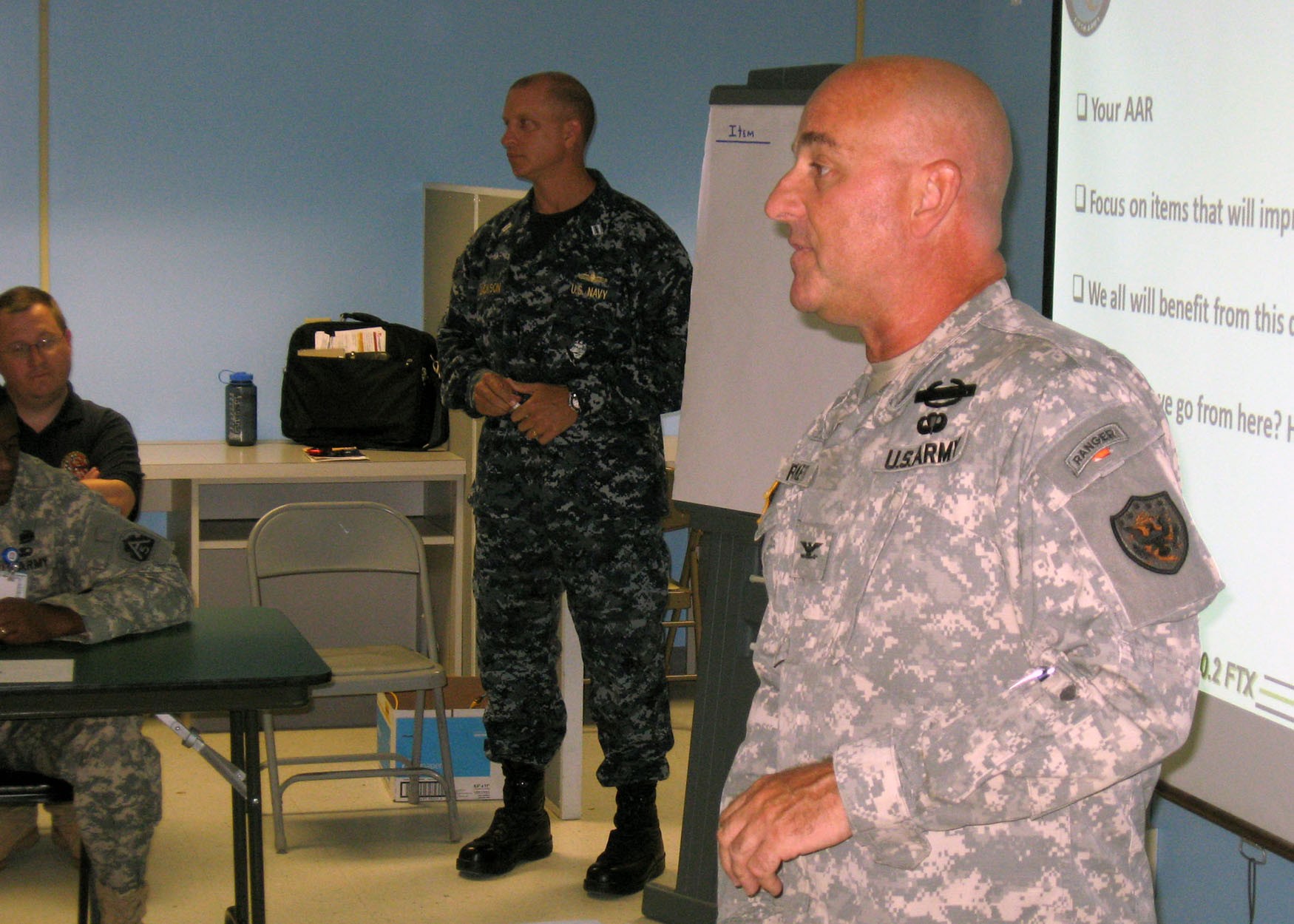
CAMP ATTERBURY, Ind. - Personnel from Joint Task Force - Civil Support not only helped another unit by serving as Observer Controller Trainers, they also found ways to help themselves.
A team of 44 military, civilian and contract personnel served as OCTs as well as in a variety of exercise control roles for Vibrant Response 10.2 FTX in support of U.S. Army North's Joint Task Force - 51, headquartered in San Antonio, which served as the command and control element for the national emergency response exercise.
The exercise is a United States Northern Command training event for the Chemical, Biological, Radiological, Nuclear and high-yield Explosives Consequence Management Response Force 10.2, which is coordinated by JTF-51. The field training exercise focused on Department of Defense support of civil authorities in a consequence management role.
The scenario was familiar to the JTF-CS contingent because it was very similar to the Vibrant Response 10.1 FTX in which JTF-CS participated in November, also at Camp Atterbury and various locations in Indiana.
Both exercises simulated the detonation of a 10-kiloton nuclear bomb in Indianapolis, and both units were the headquarters for the Department of Defense response.
"Our job was to observe JTF-51 in their planning, management and execution of operations and provide unbiased feedback," said Col. Thomas Plunkett, the senior OTC from JTF-CS.
In addition to having been through a similar exercise, the team also was able to study the new scenario and understand what was going to happen, Plunkett said. The team's goal was to identify gaps and see how JTF-51 created mitigation strategies.
The OTCs provided a set of eyes that are not caught up in the pressure of the exercise, he added, which allows them to better see where problems develop. The OTCs can position themselves to observe the cause and effect of an action taken - or not taken.
The OTCs observed the process and watched how the JTF-51 staff translated a request for assistance to units conducting consequence management operations on the ground, said Cmdr. Monty Hasenbank, JTF-CS' chief of interagency operations, who served as an OTC during the exercise.
"As an OCT, we need to step back and watch and allow the individual being trained to work through the process," he said.
Being an OCT was not new to Hasenbank, but this mission had a different twist. Naval aviators always observe other pilots; but with aviation, there are clear-cut right and wrong answers. For the CBRNE consequence management mission, there is more subjectivity.
"It's an evolving mission set for the military," he added. "It's not ... appropriate to say there is a right way or a wrong way to do it."
By capturing their observations, the JTF-CS OTCs could bring information back and use that material to examine the unit's own processes and procedures, Plunkett said. JTF-CS is setting up work groups to identify improvements that can be made to JTF-CS policies and procedures and integrate them into future exercises, including the upcoming Vibrant Response 11.1 Command Post Exercise.
"It was just a great learning experience for our OTCs as we prepare for our own exercises and real-world mission," Plunkett said.
The mission for the JTF-CS personnel was successful in two ways, Hasenbank said. First, it helped JTF-51 to train and enabled the commanders of Army North and U.S. Northern Command to understand the capabilities of CCMRF 10.2. Secondly, the team was able watch from behind the scenes how training is made successful during a large-scale exercise and how much effort it takes to ensure success.
Hasenbank has served with JTF-CS for three years and has been participated in numerous exercises with the command.
"Every exercise we do, we learn something new," he said, adding that every exercise provides a venue for better collaboration between interagency partners at the state, local and federal levels. As all the parties involved move forward, that coordination and cooperation will only improve.

Social Sharing